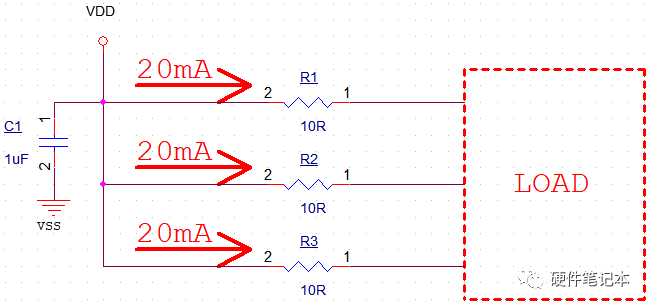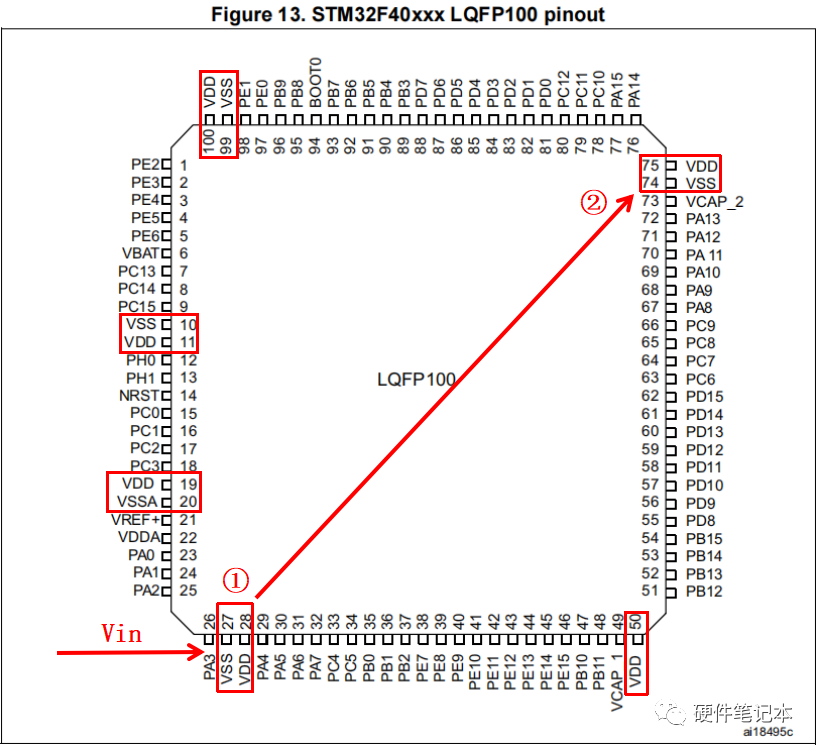
So why are there so many pins? Wouldn’t it be better to have fewer? Fewer pins make PCB routing easier.
Actually, there are reasons for the chip being designed this way.
1. Increase Current Supply Capacity
The output current capability of a microcontroller’s IO port is limited; traditional microcontroller IO ports generally provide around 10mA, while modern microcontroller IO ports typically offer 20-25mA.
With multiple IO ports combined, it effectively increases the number of power supply channels, enhancing the current supply capacity. Compared to a single VDD pin, this improves reliability.

As shown in the figure, if the current flowing through one IO port is 20mA, then three IO ports would be 60mA.
2. Convenient Local Power Supply
To simplify the explanation, I drew the following schematic.
If there were only one group of VDD supplying power from point ①, when point ② needs power, the current can only flow along the path indicated by the arrow, which is relatively far.
As the load increases, the VDD current experiences sudden changes; the longer the path distance, the greater the voltage drop generated, leading to more noticeable power fluctuations, which can affect the normal operation of the microcontroller.

If at this moment, an external power source VDD is directly connected at microcontroller point ②, the path is shortest, and the power supply is most stable.